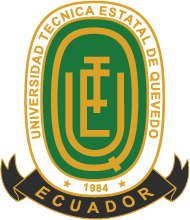Importance of interculturality on foreign language teaching and cultural adaptation)
DOI:
https://doi.org/10.18779/csye.v7i1.599Keywords:
culture shock, stereotypes, languages, interculturality, adaptationAbstract
This paper on intercultural communication contains
examples of traditions from diverse cultures and
experiences of international students that illustrate
how the world is understood and the importance of
intercultural education. Nowadays, education must
prepare young people for cultural dialogue, therefore the
objectives of the study were to socialize the importance
of intercultural education in foreign language teaching,
to identify the differences and similarities in a culture
that influence the process of adaptation in different
countries, and to determine the signs and symptoms
of culture shock experienced by international students
in foreign countries. This sociolinguistic research
used interviews and questionnaires with closed and
open-ended questions. As it is a mostly qualitative
investigation, the opinions, experiences, and advice of
the participants recorded in written form allowed the
grouping of the results into three general aspects to be
considered by teachers who teach foreign languages:
the image of the inner world (mental and emotional),
stereotypes, and culture shock. In conclusion, it was
found that the participants did not know the concepts
of interculturality, the variations in the image of the
inner world were significant from one culture to the
other, stereotypes negatively affected intercultural
communication, and the lack of knowledge of the
culture influenced culture shock.
Downloads
References
Ali, S., Kazemian, B., & Mahar, I. (2015). The Importance of Culture in Second and Foreign Language Learning. Dinamika Ilmu, 15(1), 1-10. https://doi.org/10.21093/di.v15i1.99
Atay, Derin & Kurt, Gokce & CAMLIBEL, Zeynep & Ersin, Pinar & Kaslioglu, Ozlem. (2009). The Role of Intercultural Competence in Foreign Language Teaching. Journal of Inonu University Faculty of Education. 10.
Boldyrev, V. (2009). Introducción a la teoría de la comunicación intercultural. Moscú: idioma ruso.
Cortina, A. (1997). Ciudadanos del mundo: Hacia una teoría de la ciudadanía (Tercera ed.). Madrid: Alianza Editorial.
Chulkina N. L. (2019) Apuntes del curso “Comunicación intercultural". Universidad Rusa de la Amistad de los Pueblos. Moscú, Rusia.
Fernández-Agüero, M., & Chancay-Cedeño, C. (2019). Interculturality in the Language Class –Teachers’ Intercultural Practices in Ecuador. RELC Journal, 50(1), 164–178. https://doi.org/10.1177/0033688218755847
Guzikova, M. F. (2015). Fundamentos de la teoría de la comunicación intercultural: libro de texto. Ekaterimburgo: Ural University Press.
Guzikova, M.O. & Fofanova. P. Yu. (2018) Fundamentos de la teoría de la comunicación intercultural: libro de texto para bachillerato académico / Moscú: Editorial Yurait. P. 121.
Lippmann, W. (1964). La opinión pública. Buenos Aires: Compañía General Fabril Editora.
Liu, F. (27 de Noviembre de 2020). Intercultural Language Teaching Practice in EFL Classroom China--College English Instruction Based on Film The Proposal. Obtenido de CCSE Canadian Center of Science and Education: https://ccsenet.org/journal/index.php/elt/article/view/0/44272
Moya-Chaves, D. S., Moreno-García, N. P., y Núñez-Camacho, V. (2019). Interculturality and language teaching in Colombia: The case of three Teacher Education Programs. Signo y Pensamiento, 37(73). https://doi.org/10.11144/Javeriana.syp37-73.iltc
Oberg, K. (1954): Culture Shock [en línea] http://www.youblisher.comlp/53061-P1ease-Adda-Title/
Real Academia Española. (2014). Diccionario de la lengua española (23.3ª ed.). Consultado en: https://dle.rae.es
Schiopu, L. (3 de Diciembre de 2018). Integrating metacognition and critical thinking skills in the exploration of culture in EFL classroom. Obtenido de Journal of Pedagogical Research: https://files.eric.ed.gov/fulltext/EJ1301134.pdf
Tylor, E. (1889). Primitive culture: researches into the development of mythology, philosophy, religion, art, and custom. New York: Holt.
UNESCO. (20 de Octubre de 2005). Convención sobre la Protección y la Promoción de la Diversidad de las Expresiones Culturales. Obtenido de https://en.unesco.org: https://en.unesco.org/creativity/sites/creativity/files/2811_16_passport_web_s.pdf
Vezhbitskaya, A. (1996). Idioma. Cultura. Cognición. Moscú: Diccionarios rusos.
Xi, L., Sitong, R., & Qianru, Z. (2022, Febrero 1). The Influence of Cultural Learning on Second. doi:10.2991/assehr.k.220131.101
Zaliznyak, A. L. (2002). Ideas clave de la imagen del mundo en el idioma ruso. Notas domesticas. Obtenido de https://magazines.gorky.media/oz/2002/3/klyuchevye-idei-russkoj-yazykovoj-kartiny-mira.html
Published
How to Cite
Issue
Section
License
Copyright (c) 2023 Maria Lorena Estupiñan Lince, Jairo Patricio Galarza Pucha

This work is licensed under a Creative Commons Attribution-NonCommercial-ShareAlike 4.0 International License.
Licensing Agreement
This journal provides free access to its content through its website following the principle that making research available free of charge to the public supports a larger exchange of global knowledge.
Web content of the journal is distributed under a Attribution-NonCommercial-ShareAlike 4.0 International.
Authors may adopt other non-exclusive license agreements for the distribution of the version of the published work, provided that the initial publication in this journal is indicated. Authors are allowed and recommended to disseminate their work through the internet before and during the submission process, which can produce interesting exchanges and increase citations of the published work.




